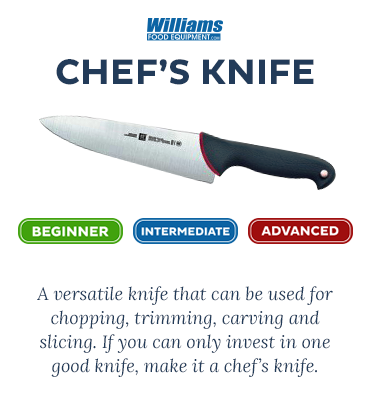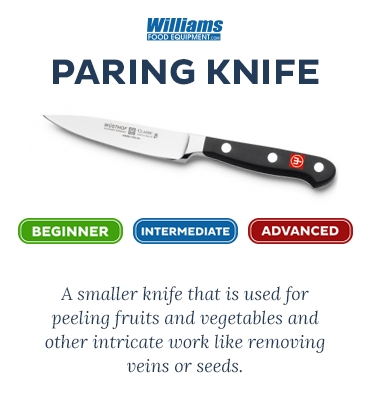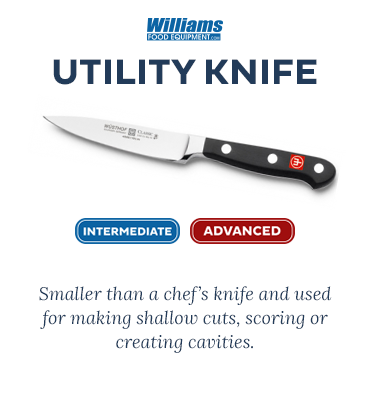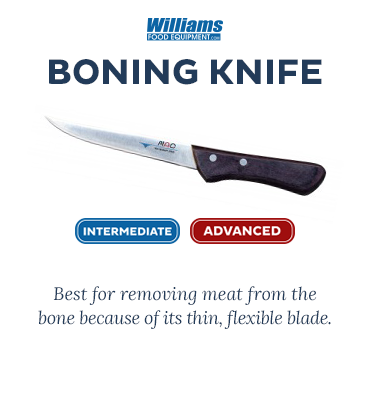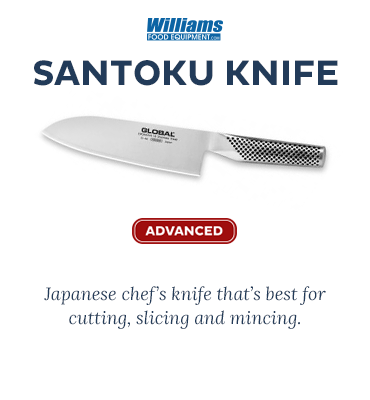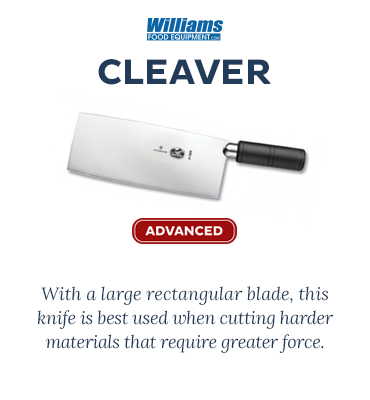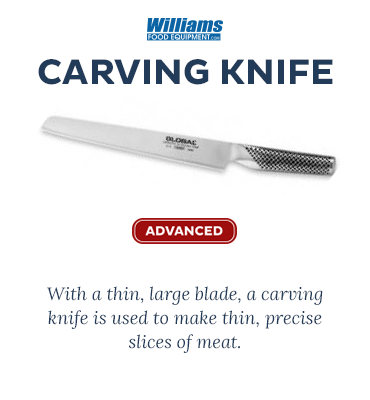Knife Buying Guide
2026 Jan 12th
Whether you’re still mastering your favourite recipes or you’ve been wearing a chef’s hat for years, a good set of knives is critical for success in the kitchen. Before rushing out and buying a full set, read our knife-buying guide to learn to recognize good quality and establish the essentials for your kitchen based on your experience level.
Pre-Cutting Considerations
What’s Cookin’?
Consider the type of food you regularly make and base your selection around that. For example, if you typically eat a lot of meat or fish, you might consider a boning knife, but if you’re a vegetarian you likely won’t need it as much.
Take Care of Your Blades
How much maintenance (sharpening, cleaning, etc.) are you willing to do? The answer will determine the type of knives you buy. If you would prefer dishwasher-safe knives, avoid carbon ones that rust easily. If you don’t want to frequently sharpen your knives, consider a forged blade that holds its edge longer.
Budget
It’s often true when they say, “You get what you pay for". And this certainly includes knives. Set a budget and purchase the best quality knives you can afford. If your budget is tight, quality over quantity is important, and a multi-functional knife is a great option.
Hold on to Your Handle
After you’ve bought your shiny new knife, before you start chopping up a master cut of meat, make some practice cutting motions first. Getting a handle on the weight and balance of your knife by mimicking the slicing action will give you an idea of how the knife will perform.
How to Recognize a Good Quality Knife
Knife Terminology
You will have to choose between a forged and a stamped knife. A forged knife is typically more expensive and is made from a single piece of steel that has been heated and beaten. Forged knives, while the pricier option, have sturdy blades that are easy to sharpen and a bolster and heel to protect your fingers.
Stamped knives are a less expensive option than forged knives, and are created by a machine stamping them out from a large sheet of steel. While there are still very high-quality, reliable stamped knives, they lack a bolster and heel, and their edges tend to wear more quickly. 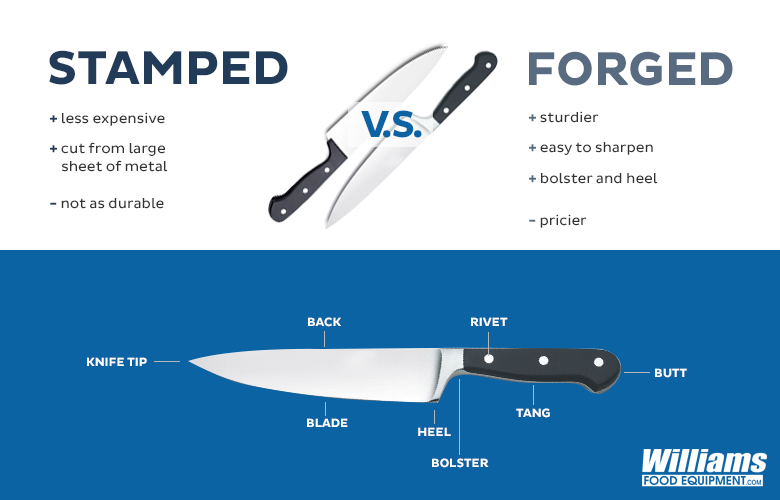
Construction
How much metal is there? A good quality knife will have metal from the blade through to the handle, known as full tang. A knife that has the blade and handle welded together, known as a partial tang, could eventually weaken and break. A full tang knife is best in terms of strength, durability, weight, and balance.
Blade Types
With many different materials to choose from, it’s important to know what will last. Keep in mind the following points to find the right types of blades to use in your kitchen.
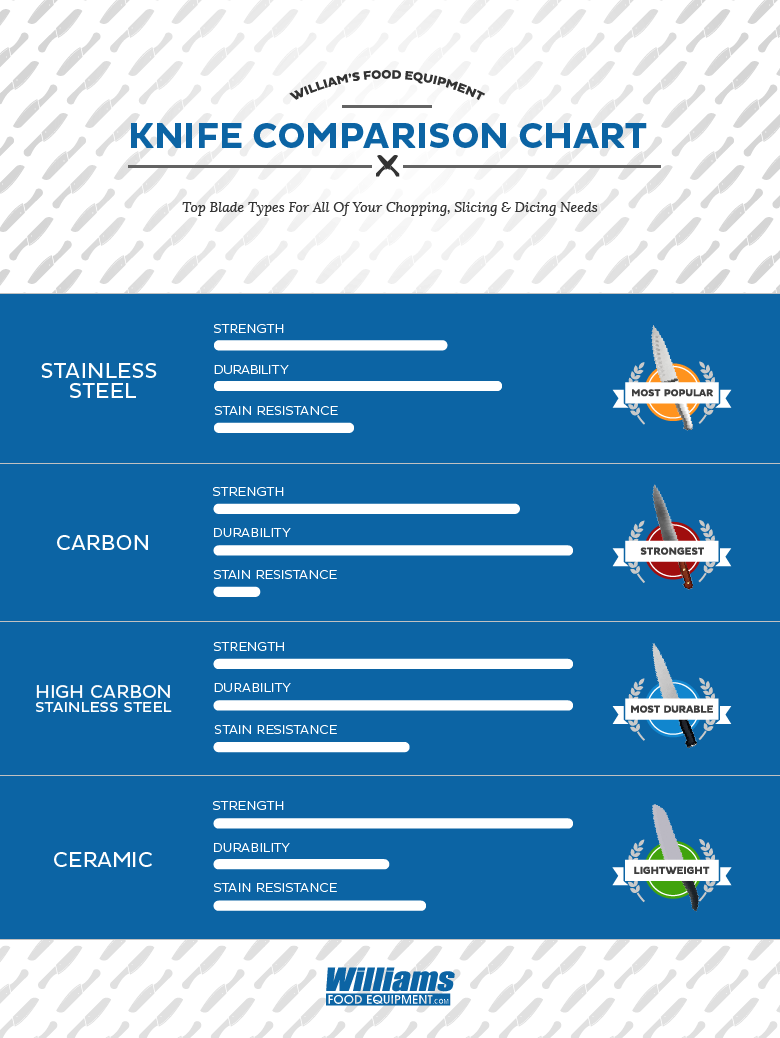
Using the indicators of strength, durability, and stain resistance, you will easily be able to find the knife that will keep you chopping long into the future.
Handle Types:
- Wood – Wooden handles look nice but can warp or degrade over time.
- Plastic, composite or resin – While not as aesthetically pleasing as wood, this material is comfortable to hold and has a stable grip.
- Single Material - Handles that are simply a continuation of the blade's material (steel, carbon, etc.) are visually pleasing and impressively strong, preventing fears of any breakage.
Which Knives Should You Buy?
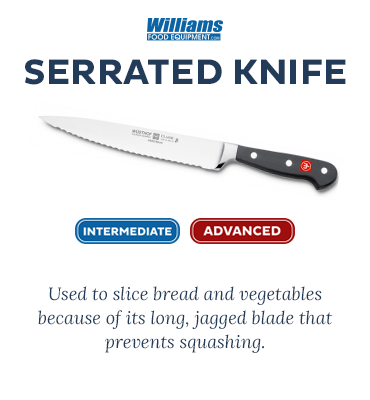
So, which is best for you? What’s your budget? Are you a meat slicer or a vegetable chopper? Jot some notes down, and figure out the perfect set for your needs. You’ll be slicing, chopping, mincing, and julienning in no time.


